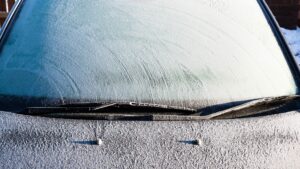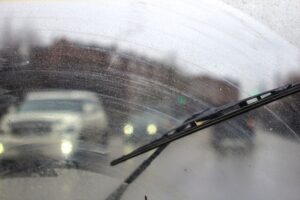Windshield wiper blades aren’t something you think about until you realize you need them. It’s snowing or raining heavily and visibility is close to none, The blades go back and forth but nothing changes, we still can’t see.. Let’s try to avoid this scenario we’ve all been in. Let’s talk about the best wiper blades for the winter and things you can to do extract maximum performance and keep your blades in good condition. Let’s leave our streaky blades in the rear-view mirror.
Are Your Windshield Wipers Ready For Winter?
As winter sets in, ensuring your windshield wipers are up to the task is crucial for safe driving. Cold weather can stiffen and damage wiper blades, making them less effective when you need them the most. Winter-specific wiper blades are designed to withstand the cold, featuring an extra layer of synthetic rubber that keeps them pliable even in freezing temperatures.
Before hitting the road, it’s wise to check your wipers for any signs of wear or damage. Using an ice scraper to clear ice and snow from your windshield before activating the wipers can also help prevent unnecessary strain on the blades. Additionally, with the increased use of salt and sand on winter roads, it’s important to regularly clean your windshield and wipers to prevent damage caused by abrasive materials. Regular maintenance and care can ensure that your wipers are ready to handle whatever winter throws your way.

Winter vs Summer Wipers
Winter wiper blades are specifically designed to tackle the challenges of colder weather, whereas summer wiper blades are optimized for warmer conditions. The main difference lies in the construction of the blades. Winter blades often feature a more robust design with a reinforced frame and a special rubber compound that remains flexible in low temperatures. This flexibility helps the blades maintain contact with the windshield even in icy conditions, ensuring clear visibility. On the other hand, summer blades are typically made with a softer rubber that is more prone to becoming stiff and brittle in cold weather. Additionally, winter blades may have additional features like a rubber boot covering the frame to prevent snow and ice buildup, enhancing their performance during winter months. When transitioning between seasons, it’s important to switch to the appropriate wiper blades to ensure optimal performance and visibility.
Yes, there are all-season wiper blades available on the market. These blades are designed to provide reliable performance in a variety of weather conditions, including both summer and winter. All-season wipers are typically made with a durable rubber compound that remains flexible in a wide range of temperatures, allowing them to effectively clear rain, snow, and debris from the windshield throughout the year. While all-season wipers can offer convenience by eliminating the need to switch between summer and winter blades, they may not provide the specialized performance characteristics of blades specifically designed for extreme cold or hot conditions. Therefore, in regions with particularly harsh winters or summers, drivers may still opt for dedicated winter and summer blades for optimal performance.

Tips For Visibility and Performance
Before you Drive:
Before driving your car in cold, snowy, or icy conditions, it’s important to take some precautions to prevent damage to your wipers and ensure clear visibility. Here are some steps you can take:
- Clear the windshield of snow and ice: Use an ice scraper or a snow brush to remove any snow and ice buildup from your windshield. This will prevent your wipers from having to work extra hard to clear the windshield, reducing the risk of damage to the wiper blades or the wiper motor.
- Clear the wiper blades: After clearing the windshield, make sure to also clear any snow or ice from the wiper blades themselves. This will ensure that the blades can make full contact with the windshield and operate effectively.
- Check the wiper fluid: Ensure that your windshield wiper fluid reservoir is filled with a winter-grade fluid that won’t freeze in cold temperatures. This will help keep your windshield clean and clear while driving.
- Lift the wiper blades: If your car is parked outside in freezing temperatures, consider lifting the wiper blades away from the windshield to prevent them from freezing to the glass. This can help prolong the life of the wiper blades and prevent damage when you start the car.
- Warm up the car: Give your car a few minutes to warm up before driving off. This will not only make the interior more comfortable but also help thaw any remaining ice on the windshield and make it easier for the wipers to do their job.
By taking these steps, you can help protect your wipers and ensure that they are ready to handle winter driving conditions without getting damaged.
Replacing your Wipers
The frequency of wiper blade replacement can vary depending on several factors such as the climate you live in, your driving habits, and the quality of the wiper blades. As a general guideline, it’s recommended to replace your wiper blades every 6 months to a year, or as soon as you notice signs of wear or deterioration.
Here are some signs that indicate it’s time to replace your wiper blades:
- Streaking: If your wiper blades leave streaks or smudges on the windshield when in use, it’s a sign that the blades are no longer making proper contact with the glass and need to be replaced.
- Skipping: Wiper blades that skip across the windshield instead of smoothly gliding can indicate that the blades are worn or damaged and should be replaced.
- Squeaking or Chattering: Unusual noises such as squeaking or chattering during operation can indicate that the wiper blades are not functioning correctly and may need to be replaced.
- Cracking or Splitting: Check the rubber of the wiper blades for any signs of cracking, splitting, or deterioration. Damaged rubber can lead to ineffective wiping and should be replaced.
- Reduced Visibility: If your wiper blades are no longer clearing the windshield effectively, leading to reduced visibility during rain or snow, it’s time to replace them.
In conclusion, maintaining functional wiper blades is essential for safe driving, particularly in challenging weather conditions like those encountered during winter. It’s also a good idea to inspect your wiper blades regularly, especially before the start of the winter season, to ensure they are in good condition and ready for any weather conditions you might encounter. Taking a few minutes to care for your wiper blades can go a long way in enhancing your driving experience and keeping you safe on the road, no matter the weather.Top of Form
For more car tips read our pages on preventative maintenance for your vehicle.
Read more Auto Care Articles and listen to our podcasts.

Thanks. Great tips and great reminders.
Thank for expertise, now I understand why my wipers get noisy.